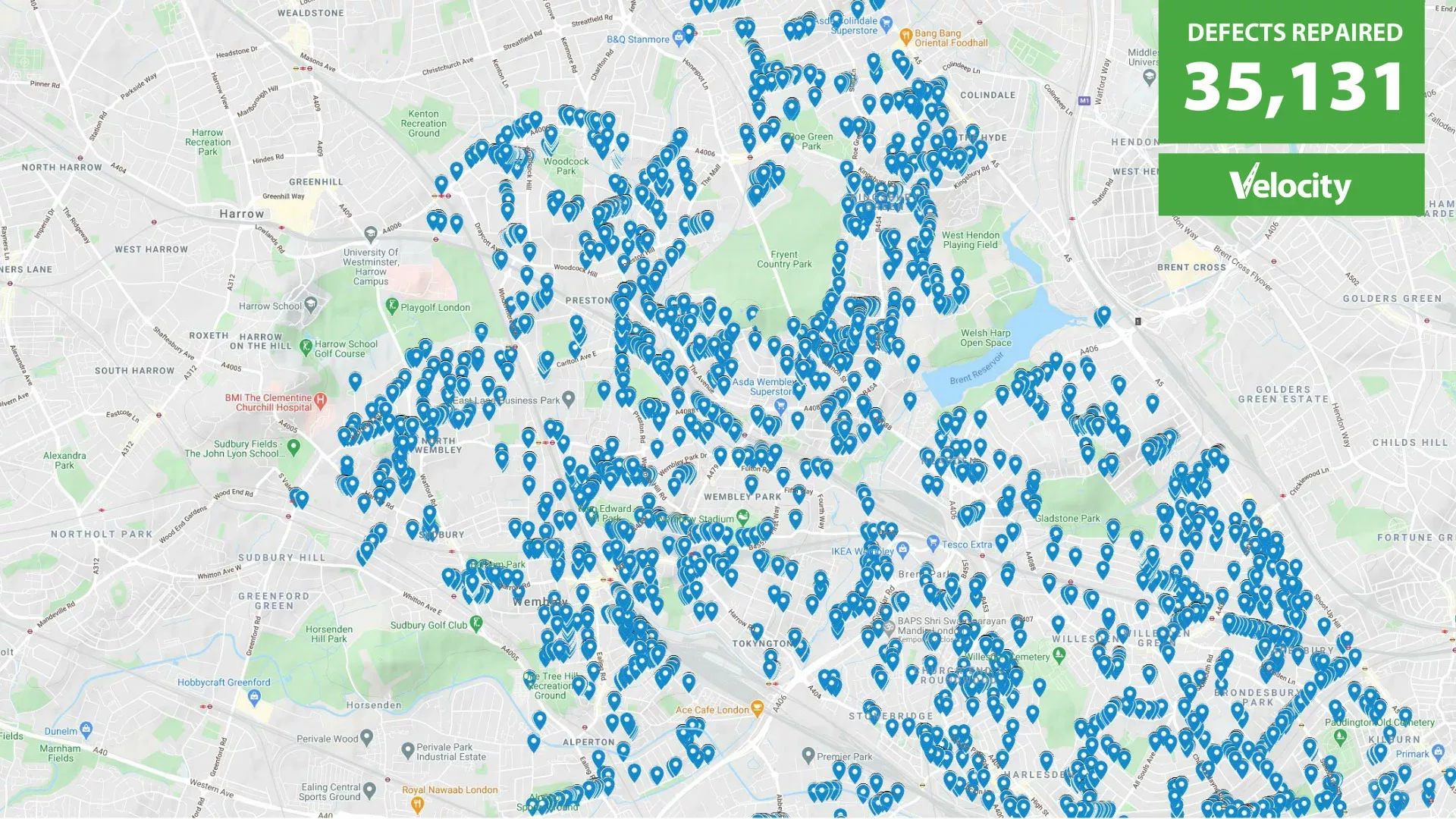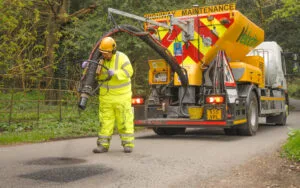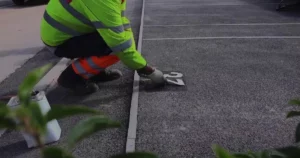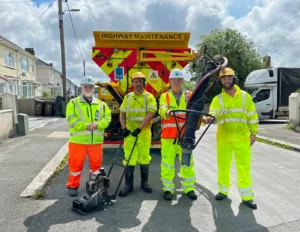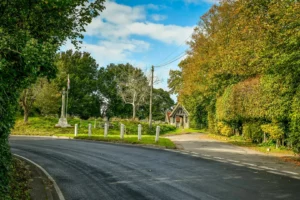The London Borough of Brent has completed an ambitious two-year programme to get rid of potholes and defects using Velocity Patching.
In the largest ever spray-injection patching project ever undertaken in the capital, the local authority set out to visit every residential street in the borough. By using Velocity Patching, preventative maintenance was carried out alongside reactive repairs, improving satisfaction for residents and reducing the ongoing cost of maintenance.
The campaign followed a trial of the technique in 2018 to ensure that spray-injection patching met the demanding needs of the urban network in the borough.
Over the two-year programme, 35,131 potholes and defects have been repaired at an average cost of £24 each compared to the typical cost to repair a pothole in London of £64, allowing Brent Council to make its budget go further.
Tony Kennedy, Brent Council’s Head of Highways and Infrastructure, said: “Like most London boroughs we were experiencing a number of problems with potholes and other defects on our carriageways, particularly during the winter months when the cold weather accelerates deterioration. We decided we had to look at something different, and entered into a two-year contract where the aim was to visit every residential road.
“Now we are at the end of that project, we’re very pleased to say that thanks to our partnership with Velocity we have achieved that. Velocity have carried out over 35000 repairs to defects over that time. We have had minimal complaints from residents, and our roads are a lot more capable and durable to withstand cold snaps.
“The speed of the process is very important to us. A traditional pothole repair normally takes 15-20 minutes, whereas using the Velocity process we are able to do these repairs in an average time of 3-5 minutes. That has the benefit of opening up the road a lot quicker, reducing congestion and minimising any disruption to residents.
“Overall we’ve been very pleased and the public response has been very promising regarding the repairs that have been made and the condition of the network now.”
With the speed of the process, Brent were able to fix in excess of 50 repairs per day, compared to around 10-15 with a traditional gang. Taking a preventative approach, whole roads were treated at the same time, fixing defects below the intervention level before they deteriorated further, preventing return visits and improving residents’ satisfaction.
Brent Council’s highways team adopted a approach to planning works using Yotta’s Horizons visualised asset management software together with data collected during highways inspections, helping to move form reactive to proactive maintenance.
The software provided operational insights to help focus on ‘pothole hotspots’, prioritising repairs based on density and risk. In doing so, the speed and efficiency of the delivery of the work was accelerated, maximising productivity and improving the network significantly quicker for residents.
As a cold applied treatment with zero waste to landfill, the use of Velocity patching contributed to Brent Council’s commitment to reducing their carbon footprint.
Councillor Krupa Sheth, Cabinet Member for Environment at Brent Council said: “We know that potholes are one of the most frustrating problems for drivers and cyclists across the borough. Because this method is quicker, it costs less, which means we have been able to repair more potholes for the same budget.
We have also been able to bring down the carbon footprint of these repairs too, by the equivalent of 700 cars being run for a year.”
Councillor Muhammed Butt, Leader of Brent Council, promoted the adoption of an innovative approach to road maintenance: “We decided two years ago that we needed to take a different approach to maintaining the network that residents, businesses and visitors to Brent rely on.
“Velocity patching is an innovative technique that has helped us to greatly improve our roads and deliver value for money.
“Normally at this time of year my phone would be ringing off the hook with complaints about potholes. This year there are no complaints because people are happy.”
The project has been the largest use of spray-injection patching in London, delivered by multiple crews and machines working seven days per week. To adapt to the busy urban environment, adjustments were made to the machinery and processes to protect street furniture, verges and vehicles.
Alastair Smith, Velocity’s customer relationship manager, said: “Working in busy urban environments brings challenges, but we have been able to plan and adapt operationally to mitigate them, delivering great value and improving the network.
“We see this as a great model for other London boroughs, and I’m looking forward to working with local authorities throughout the capital to share the success we have achieved in Brent.”
To protect the investment that Brent have made in improving their network, the council plan to carry out pre- and post-winter Velocity patching programmes to repair any new defects before further deterioration, keeping the roads in good condition.



